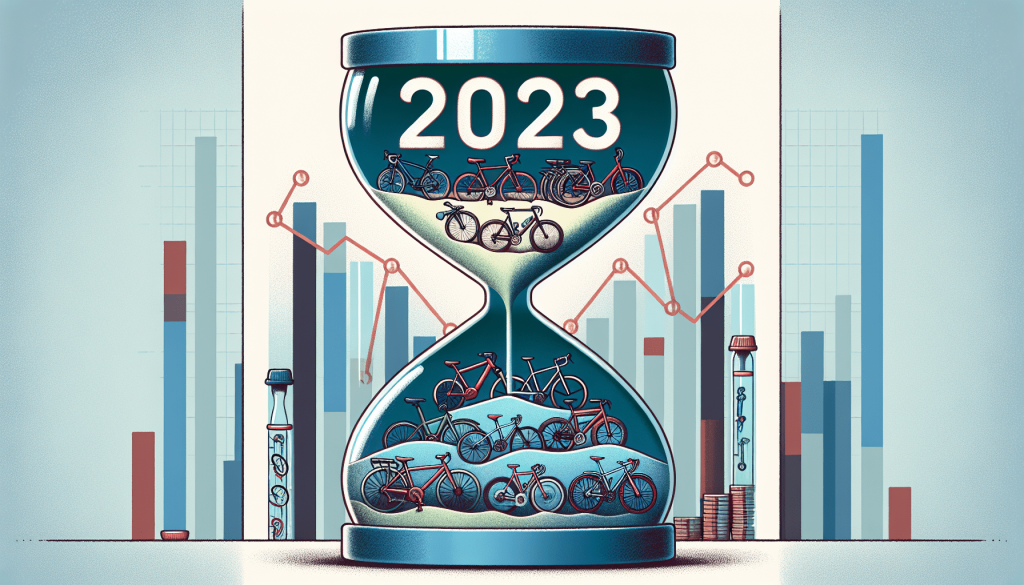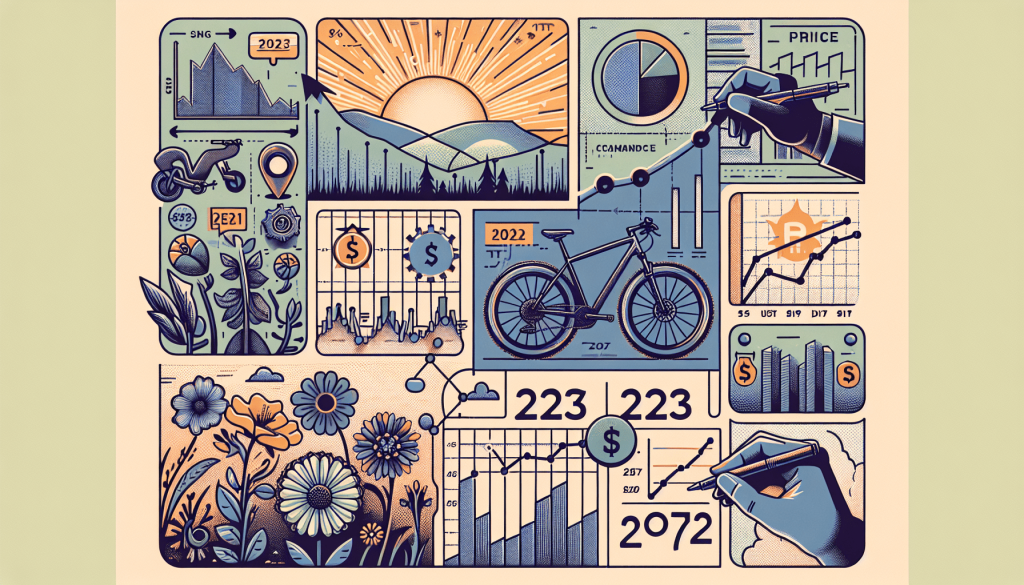Will Bike Prices Come Down In 2023?
Imagine cruising down the open road on your shiny new bike, the wind in your hair and the freedom at your fingertips. But, before you can embrace that thrilling adventure, there’s one burning question on your mind: will bike prices come down in 2023? As the world eagerly awaits the arrival of a new year, bike enthusiasts and potential buyers can’t help but wonder if this long-awaited drop in prices is just around the corner. With the ever-increasing demand for bikes and supply chain challenges, it seems like a distant dream. However, there’s no need to lose hope just yet. Let’s take a closer look at the factors that could potentially influence bike prices in the coming year.
Current State of Bike Prices
Rise in Demand
Bike prices have experienced a significant increase in recent years due to the rise in demand. As more people have embraced cycling as a means of transportation and a form of exercise, the demand for bikes has surged. This increased interest in cycling, especially during the COVID-19 pandemic, has put pressure on bike manufacturers to meet the growing demand, resulting in higher prices.
Supply Chain Challenges
The bike industry has faced numerous supply chain challenges, leading to higher bike prices. The COVID-19 pandemic and subsequent lockdowns disrupted the global supply chain, causing delays in the production and delivery of bikes. Additionally, the shortage of raw materials and components, such as steel, aluminum, and electronic parts, has further hindered the production process. These challenges have increased manufacturing costs and, consequently, pushed bike prices upward.
Inflationary Pressures
Inflationary pressures have also contributed to the increase in bike prices. Inflation refers to the general increase in prices of goods and services over time. Rising inflation can erode the purchasing power of consumers, making it more expensive for them to buy bikes. Factors such as rising energy costs, increasing wages, and higher transportation expenses can all impact the overall cost of manufacturing and distributing bikes, ultimately leading to higher prices for consumers.
Factors Influencing Bike Prices in 2023
Availability of Raw Materials
The availability of raw materials plays a crucial role in determining bike prices in 2023. Supply shortages and price fluctuations of materials like steel, aluminum, and rubber can significantly impact bike manufacturing costs. If the supply of raw materials remains limited, manufacturers may have to resort to sourcing them from alternative suppliers, which could drive up prices even further.
Global Economic Conditions
The global economic conditions will undoubtedly impact bike prices in 2023. The aftermath of the COVID-19 pandemic and the recovery of economies around the world will play a significant role. The job market and consumer spending are key indicators of economic health, and if people have less disposable income or are hesitant to spend due to economic uncertainties, bike sales could be affected, leading to more competitive pricing strategies.
Market Competition
Competition among bike manufacturers will continue to shape bike prices in 2023. Established manufacturers vying for market dominance will engage in aggressive pricing strategies to attract customers. The presence of new entrants in the market will also intensify competition, potentially leading to price wars. Moreover, product differentiation and innovation will be crucial, as manufacturers strive to offer unique features and designs to justify higher prices or gain a competitive edge.
Government Policies and Taxes
Government policies and taxes can significantly impact bike prices. Tariffs and trade agreements can lead to higher import costs for manufacturers, which are then passed on to consumers. Import and export regulations also play a role in determining the availability and cost of bikes in different regions. Additionally, environmental regulations can impact the production and manufacturing processes, which may result in higher costs that are passed on to consumers through increased prices.

Availability of Raw Materials
Supply Shortages
One of the primary factors influencing bike prices in 2023 is the availability of raw materials. Supply shortages of essential materials like steel, aluminum, and rubber can disrupt the production process and lead to increased prices. These shortages can occur due to a multitude of factors, including global demand surpassing supply, disruptions in the supply chain, or geopolitical tensions affecting trade relationships.
Price Fluctuations
In addition to supply shortages, price fluctuations of raw materials can also impact bike prices. For example, if the cost of steel suddenly increases due to market conditions or increased demand from other industries, bike manufacturers may be forced to pay higher prices for this essential material. These increased costs are then often passed on to consumers, resulting in higher bike prices.
Impact on Bike Manufacturing
The availability and cost of raw materials directly impact bike manufacturing processes. If the necessary raw materials are scarce or prices are prohibitively high, manufacturers may have to find alternative materials or suppliers, which can lead to changes in the manufacturing process. These changes may require additional investments in research and development or alterations in production techniques, which can ultimately affect the final cost of bikes.
Global Economic Conditions
Impact of COVID-19
The impact of the COVID-19 pandemic on the global economy is a significant factor influencing bike prices in 2023. The pandemic has caused disruptions in various sectors, leading to job losses, reduced consumer spending, and economic uncertainty. If the recovery of economies is slow or uneven, it may dampen consumer confidence and affect bike sales. Lower demand can lead to price reductions as manufacturers seek to stimulate sales or remain competitive, while a rapid economic recovery may result in higher prices due to increased consumer spending power.
Job Market and Consumer Spending
The state of the job market and consumer spending will also influence bike prices in 2023. High unemployment rates and reduced disposable income can impact consumers’ ability and willingness to purchase bikes at higher prices. On the other hand, a strong job market and increased consumer spending can create more favorable conditions for bike sales, potentially allowing manufacturers to maintain or increase prices.
Currency Exchange Rates
Currency exchange rates play a vital role in determining bike prices, especially for manufacturers involved in international trade. Fluctuations in exchange rates can impact the cost of imported raw materials, components, or finished bikes. If a manufacturer’s currency weakens against the currency of their suppliers, it can result in higher costs, which may be passed on to consumers through elevated bike prices.

Market Competition
Competition among Bike Manufacturers
Competition among bike manufacturers is a significant factor that will influence bike prices in 2023. Established manufacturers will strive to maintain their market share and attract new customers, leading to competitive pricing strategies. Price reductions, discounts, or bundled offers may be used as tactics to entice consumers. This competition can result in lower prices overall, benefiting consumers.
New Entrants in the Market
The entry of new players into the bike market can impact pricing dynamics. New entrants often try to penetrate the market by offering competitive prices or unique features to differentiate themselves. This increased competition can force established manufacturers to adjust their pricing strategies and potentially offer more competitive prices to retain customers.
Product Differentiation and Innovation
Product differentiation and innovation can greatly influence bike prices. Manufacturers seeking to justify higher prices or gain a competitive edge may focus on offering bikes with unique features, improved performance, or exceptional design. These premium features can command higher prices in the market, as consumers perceive them as offering greater value for the money they spend.
Government Policies and Taxes
Tariffs and Trade Agreements
Government policies such as tariffs and trade agreements can impact bike prices. Tariffs on imported bikes or components can increase manufacturing costs, which are then passed on to consumers. Similarly, trade agreements that reduce or eliminate tariffs can lower bike prices, as manufacturers can source materials or components at lower costs.
Import and Export Regulations
Import and export regulations can influence the availability and cost of bikes in different regions. Restrictions on imports can limit the supply of bikes, potentially leading to higher prices. Conversely, export regulations can impact a manufacturer’s ability to sell bikes in certain markets, which may result in increased prices for consumers in those regions.
Environmental Regulations
Environmental regulations can also impact bike prices, especially if they require changes to manufacturing processes or materials used. Using environmentally friendly materials or adhering to specific manufacturing standards may incur additional costs for manufacturers, which can be passed on to consumers through higher prices. However, these regulations can also lead to the development of more sustainable and durable bikes, offering long-term value for money.

Forecasted Bike Price Trends in 2023
Expert Opinions
Experts predict that bike prices will likely continue their upward trend in 2023, albeit at a potentially slower rate compared to recent years. Factors such as supply chain challenges, inflationary pressures, and economic conditions will continue to shape the pricing landscape. However, the severity of these influences will depend on a range of factors, including the recovery from the COVID-19 pandemic and the stability of global economies.
Industry Trends and Analysis
Industry trends and analysis suggest that bike prices in 2023 may see some stabilization or moderate increases. As the global supply chain recovers from the disruptions caused by the pandemic, the availability of raw materials may improve, potentially alleviating some of the supply shortages and price fluctuations. Additionally, as economies gradually rebound and consumer spending regains momentum, bike manufacturers may adjust their pricing strategies accordingly, aiming to strike a balance between affordability and profitability.
Historical Data and Market Patterns
Looking at historical data and market patterns, it is evident that bike prices have been on an upward trajectory in recent years. However, there have been instances where market forces, such as intensified competition or changes in demand, have led to price decreases. While historical data is not a foolproof indicator of future prices, it suggests that the bike market is dynamic and subject to fluctuations, highlighting the potential for price changes in the future.
Customer Expectations and Preferences
Price Sensitivity
Price sensitivity is a significant factor in customer expectations and preferences when it comes to buying bikes. Consumers are likely to compare prices across different brands and models before making a purchase decision. Higher bike prices may lead to a decrease in demand, especially if there are alternative options available at more affordable prices. Manufacturers need to consider the price sensitivity of their target customers and align their pricing strategies accordingly.
Value for Money
Customers value getting the most out of their money when it comes to purchasing bikes. They expect bikes to offer a satisfactory level of quality, durability, and features at a reasonable price. Manufacturers that can deliver a high-value product at a competitive price point are more likely to attract customers and achieve long-term success in the market.
Features and Performance
Beyond the price, customers also place importance on the features and performance of bikes. Factors such as bike weight, gears, suspension, and braking systems are among the considerations customers analyze when evaluating bikes. Manufacturers that can offer bikes with innovative features and enhanced performance may be able to justify higher prices, catering to customers who prioritize these aspects.
Brand Reputation
Brand reputation plays a crucial role in influencing customer expectations and preferences. Established and trusted bike brands often have higher brand loyalty, allowing them to command higher prices. Customers are willing to pay a premium for a well-established brand that has a history of quality and reliability. On the other hand, newer or lesser-known brands may have to offer more competitive pricing to gain market share and build their reputation.

Impact of Technology Advances
E-bike Technology
The advancement of e-bike technology can impact bike prices in 2023. E-bikes, which incorporate electric motors and batteries, have gained popularity due to their ability to provide assistance during cycling. However, the inclusion of this technology can increase the manufacturing costs of bikes, resulting in higher prices. As technology continues to improve and becomes more affordable, the prices of e-bikes may become more competitive, making them accessible to a wider range of consumers.
Production Efficiency
Technological advances can improve production efficiency, which can have a positive impact on bike prices. Manufacturers that invest in automation, streamlined production processes, and innovative assembly techniques can reduce manufacturing costs, allowing them to offer bikes at more competitive prices. Improved efficiency can also lead to shorter production lead times, enabling manufacturers to respond quickly to changes in demand and potentially avoid price increases.
Innovation in Bike Components
Innovation in bike components can both positively and negatively affect bike prices. On one hand, the introduction of new materials, lightweight frames, or advanced suspension systems can increase manufacturing costs, leading to higher bike prices. On the other hand, innovation can also lead to cost savings through improved durability, decreased maintenance requirements, or enhanced performance. These cost-saving innovations can potentially offset the higher manufacturing costs and result in more competitive prices.
Conclusion
The current state of bike prices reflects a combination of factors including increased demand, supply chain challenges, and inflationary pressures. Looking ahead to 2023, the availability of raw materials, global economic conditions, market competition, and government policies will continue to shape bike prices. Supply shortages and price fluctuations of raw materials can further impact manufacturing costs and result in higher prices for consumers.
The impact of COVID-19 on the global economy, job market, and consumer spending will play a significant role in determining bike prices in 2023. Currency exchange rates and government policies such as tariffs, trade agreements, and environmental regulations can also influence prices.
Customer expectations and preferences, including price sensitivity, value for money, features, performance, and brand reputation, are crucial considerations for bike manufacturers in setting their prices. Technological advances, such as e-bike technology, production efficiency, and innovation in bike components, can both increase and decrease bike prices depending on their impact on manufacturing costs and overall value proposition.
While forecasting bike prices in 2023 may be challenging, expert opinions, industry trends, and historical data suggest that prices may continue to rise, though potentially at a slower rate. Manufacturers will need to carefully navigate market dynamics and consumer expectations to strike a balance between profitability and affordability. Ultimately, the prospects of bike price changes in 2023 will depend on a multitude of interconnected factors that continue to shape the global bike market.


